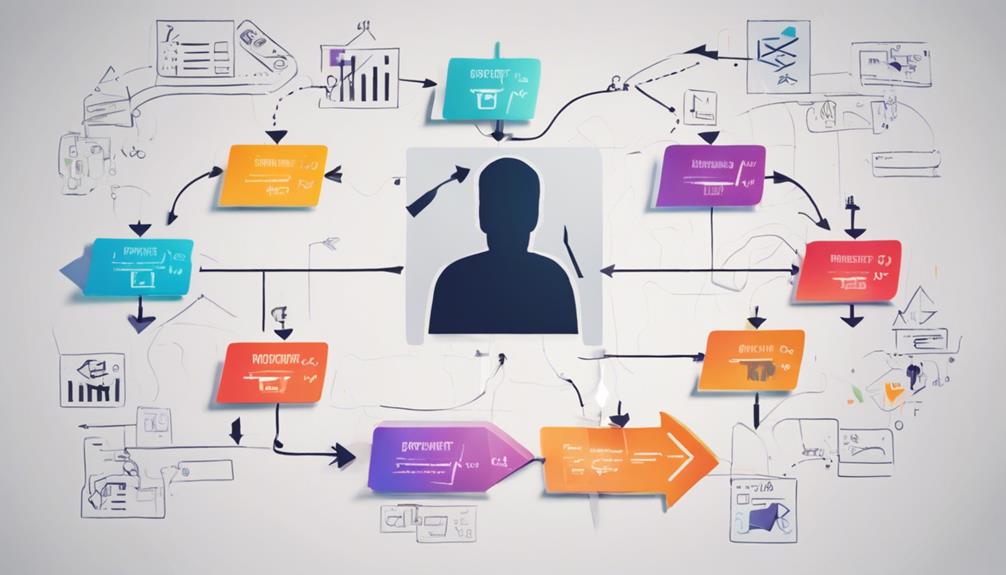To comfortably own a private plane, you'll want a net worth of at least $25 million. If you're eyeing larger luxury jets, that number jumps to between $60 million and $70 million due to higher operational costs. For midrange models, a net worth of around $120 million is typical. Keep in mind that annual operating costs often exceed $1 million, which includes maintenance, fuel, and insurance. If you're considering options beyond full ownership, there are flexible alternatives too. Discovering the ongoing costs and choices can help you make informed decisions about private aviation. For those who don’t quite meet the net worth threshold for full ownership, fractional ownership or jet cards can be more accessible options. These allow individuals to still enjoy the benefits of private jet travel without the same financial commitment. Additionally, some companies offer membership programs that provide access to a fleet of private jets on a pay-as-you-go basis.
When it comes to yacht ownership eligibility, the financial requirements are similar, if not higher, as the operational costs for a luxury yacht can easily exceed those of a private plane. It’s important to carefully consider all the financial implications and ongoing expenses before pursuing ownership of either a private plane or a yacht.
Key Takeaways
- Comfortable full ownership of a private jet typically requires a minimum net worth of around $25 million.
- Larger luxury jets necessitate a net worth between $60 million and $70 million due to higher operational costs.
- Midrange and super-midsize aircraft often require an average net worth of about $120 million for ownership.
- Fractional ownership options require a median net worth of approximately $140 million, indicating wealth needed for partial ownership.
- Suggested household income for regular private jet travel is around $745,800 to comfortably manage ongoing costs.
Cost Breakdown of Private Jet Ownership
Owning a private jet comes with a hefty price tag, and understanding the cost breakdown is essential for potential buyers. The upfront cost of purchasing a private jet ranges from $3 million to over $75 million, heavily influenced by the aircraft's size and configuration.
Once you've made that initial investment, annual operating costs can soar past $1 million. This includes various expenses like maintenance costs, which can pile up quickly due to regular inspections and unexpected repairs, potentially costing $1,000 to $2,000 each.
Additionally, it's important to track your overall financial health and budget accordingly, as having a solid budgeting plan can help manage these substantial expenses.
Fuel consumption is another significant factor; an average jet consumes around 3,500 gallons of fuel for 500 flight hours, leading to annual fuel expenses that can hit $17,500.
Don't forget about insurance costs, which can vary widely from $10,000 to $500,000 per year based on coverage options.
Additionally, hangar fees can range from $81,000 to $160,000 annually. All these costs contribute to the ongoing financial commitment of private jet ownership, making it vital to assess your financial situation carefully before opting out of private jet charters and diving into ownership.
Required Net Worth for Ownership

To comfortably own a private jet, you should aim for a minimum net worth of around $25 million. This figure guarantees you can handle not only the purchase price but also the ongoing ownership expenses.
Additionally, it's important to make sure your financial portfolio is diversified, much like how investing in a Gold IRA can protect against inflation and market fluctuations.
If you're considering larger luxury jets, be prepared for a net worth between $60 million and $70 million, as operational costs can greatly increase.
For midrange and super-midsize aircraft, the average net worth jumps to about $120 million, reflecting the greater financial commitment needed for these models.
If fractional ownership interests you, note that the median net worth of fractional jet owners is around $140 million, highlighting the wealth required for even partial ownership.
Benefits of Owning a Private Plane

Owning a private plane can save you a significant amount of time, especially during busy travel seasons when commercial flights are crowded.
This convenience not only enhances your travel efficiency but also allows you to avoid the hassles of lengthy security lines and unpredictable delays, which can be especially frustrating for frequent travelers.
Plus, you get the added benefit of privacy, allowing you to conduct business or relax without interruptions.
With a private jet, you truly control your travel experience, reflecting the importance of high-quality content in enhancing user engagement.
Time-Saving Advantages
How much time could you save by flying privately? Owning a private jet transforms your travel experience, offering unparalleled flexibility and considerable time-saving advantages. You can fly directly to over 5,000 airports, bypassing the long layovers and security lines that come with commercial airlines. Last-minute travel arrangements become seamless, accommodating any changes in your itinerary without the usual hassle.
Here's a quick comparison of time-saving benefits:
| Aspect | Private Jet |
|---|---|
| Airport Access | 5,000+ airports |
| Security Checks | Minimal to none |
| Flight Planning Flexibility | High |
| Average Trip Time | Considerably reduced |
With a private jet, you can complete trips in a fraction of the time, enhancing your travel efficiency. Plus, in-flight time isn't wasted; you can conduct meetings or tackle tasks, boosting your productivity. So if you're considering private jet ownership, think about the time you'll reclaim—time that can be spent on what really matters.
Enhanced Privacy Experience
Many people appreciate the enhanced privacy that comes with private jet ownership. With private jets, you can avoid crowded airports and long security lines, ensuring a discreet travel experience. You have complete control over your travel plans, allowing you to choose who's on board and customize your in-flight environment to suit your preferences.
This level of privacy is particularly beneficial for executives who need to hold confidential business meetings in-flight, without the distractions of commercial travel or the risk of eavesdropping. Additionally, having a private space to unwind can enhance your overall well-being, similar to how essential oils for relaxation can create a calming atmosphere. Discussing sensitive matters away from prying eyes in traditional settings means you can focus on what truly matters without worrying about public scrutiny.
Furthermore, utilizing complex trust structures can help obscure your identity as a jet owner, further protecting your privacy and assets. By accessing thousands of airports, private jets can land closer to your final destination, minimizing exposure to public spaces and ensuring a more private travel experience.
Whether you're traveling for business or leisure, owning a private jet allows you to maintain the confidentiality and discretion you desire, making it an invaluable asset for those who prioritize enhanced privacy in their travel.
Alternatives to Full Ownership

For those who crave the luxury of private air travel without the hefty price tag of full ownership, several appealing alternatives exist.
Fractional jet ownership lets you buy a share of a jet, starting around $320,000, making private travel more accessible if your net worth is at least $10 million. Additionally, it's essential to evaluate potential financial risks and consult a financial advisor before making such investments, similar to how one would approach evaluating Bitcoin IRA suitability.
Jet card programs provide prepaid hours for private flights at fixed rates, offering a cost-effective solution for infrequent travelers without the commitment of full ownership.
On-demand chartering allows for flexible travel at rates between $1,300 and $13,000 per hour, depending on the jet size. This option eliminates maintenance responsibilities while giving you access to a variety of aircraft. You might also consider empty leg flights, which can save you up to 75% when jets return to their home base without passengers.
Lastly, membership programs offer discounted rates and enhanced access to private flights for frequent travelers, striking a balance between chartering and ownership.
With these alternatives, you can enjoy the benefits of the private jet industry while keeping your financial commitments manageable.
Financial Implications and Considerations

When considering the financial implications of private jet travel, it's vital to grasp the significant costs associated with ownership and usage. Full ownership of a private jet can set you back anywhere from $3 million to over $90 million.
Beyond the purchase price, annual operating costs generally exceed $1 million. This includes expenses like maintenance, fuel, insurance, and hangar fees, which can dramatically impact your overall financial viability.
Additionally, just as diversifying investments through options like a Gold IRA can provide stability, evaluating your financial strategy is essential when contemplating the substantial commitment of private aviation.
To comfortably finance private jet ownership, a net worth of about $25 million and a household income of around $745,800 are typically recommended for regular flying.
If full ownership isn't feasible, you might explore alternative ownership options, such as fractional ownership or membership programs, which can start at approximately $320,000 and potentially exceed $1 million annually.
Wealthy individuals often seek alternatives like on-demand charters or jet cards to mitigate the significant costs associated with private jet travel.
These options can provide flexibility and access without the long-term financial commitment of ownership.
Ultimately, understanding these financial implications will help you make informed decisions about your private aviation needs.
Trends in Private Aviation Ownership

You might've noticed a shift in who's buying private jets these days.
Younger buyers are stepping into the market, driven by a surge in demand for private travel post-pandemic. This trend not only changes the demographic of ownership but also reflects the evolving landscape of private aviation.
As data-driven strategies yield measurable results, these new owners are likely seeking ways to optimize their investments in a competitive market.
Emerging Younger Buyers
A shift in the landscape of private aviation ownership reveals the rising prominence of younger buyers, a demographic traditionally underrepresented in this luxury market. Many first-time owners in their 30s and 40s are entering the domain of private jet ownership, reflecting changing wealth distribution and attitudes toward luxury travel.
With a median net worth around $100 million, these younger buyers possess the financial resources necessary to justify their investment in private aviation. This trend parallels the increasing demand for specialized roles, such as AI Cybersecurity Jobs, underscoring the evolving job market and wealth dynamics.
The pandemic impact has further accelerated this trend, leading to record increases in private jet transactions in 2022. Younger high-net-worth individuals are drawn to the enhanced privacy and flexibility that private flying offers, allowing them to avoid the disruptions common with commercial flights. This appeal makes private aviation a desirable option for those who value both comfort and efficiency in their travel.
As luxury travel continues to evolve, the entry of younger buyers signals a new chapter in private jet ownership. Their presence not only diversifies the market but also sets new standards for what it means to travel privately, paving the way for future generations of aviation enthusiasts.
Post-Pandemic Demand Increase
Post-pandemic, private aviation has seen a remarkable surge in demand, with the FAA reporting record high business jet flights in the U.S. during 2022. This significant increase in activity reflects a broader trend among wealthy individuals seeking alternatives to commercial travel, which faced disruptions during the pandemic.
In 2022 alone, over 3,000 private jet transactions occurred, totaling approximately $34.1 billion, underscoring the growing interest in private aviation ownership. As affluent travelers seek exclusive experiences, the trend mirrors the luxury cruise market, where unique amenities and memorable experiences are highly valued luxury cruises provide exclusive amenities.
Affluent buyers are increasingly turning to private jets, driven by the need for flexibility and convenience. The emergence of younger, first-time buyers in this market indicates a shift in how private aviation is perceived, making it more accessible and appealing.
Enhanced availability of used jets and various ownership models, including fractional ownership and jet cards, have further fueled this demand increase.
As you consider entering the world of private aviation, you'll find that these flexible options make private jet ownership a viable choice. Whether you're a seasoned traveler or a newcomer, the post-pandemic landscape offers exciting opportunities to redefine your travel experience.
Conclusion
In the end, owning a private plane isn't just about having deep pockets; it's about understanding the full picture. While a hefty net worth can get you in the door, ongoing costs and responsibilities can really add up. You might find that the grass isn't always greener on the other side. Weigh your options carefully, whether it's ownership, fractional shares, or chartering—there are plenty of ways to take to the skies without breaking the bank.










